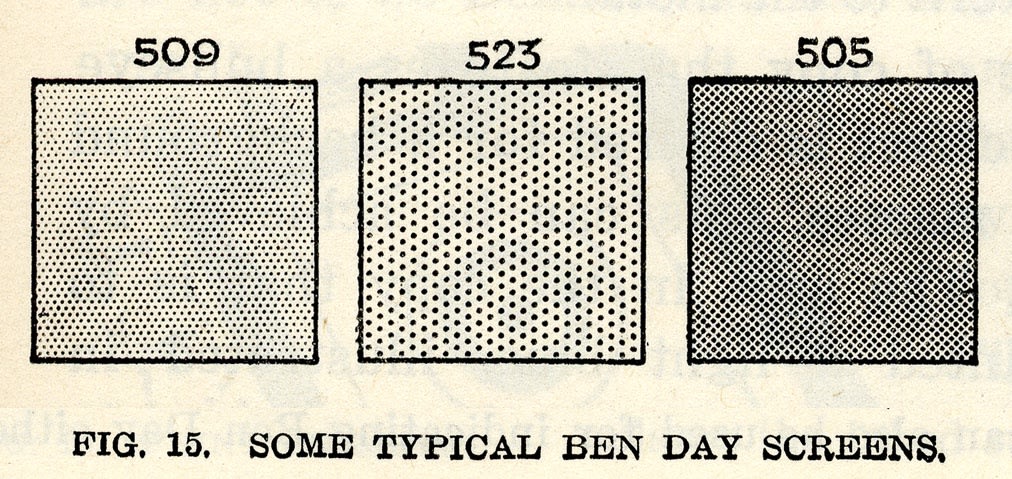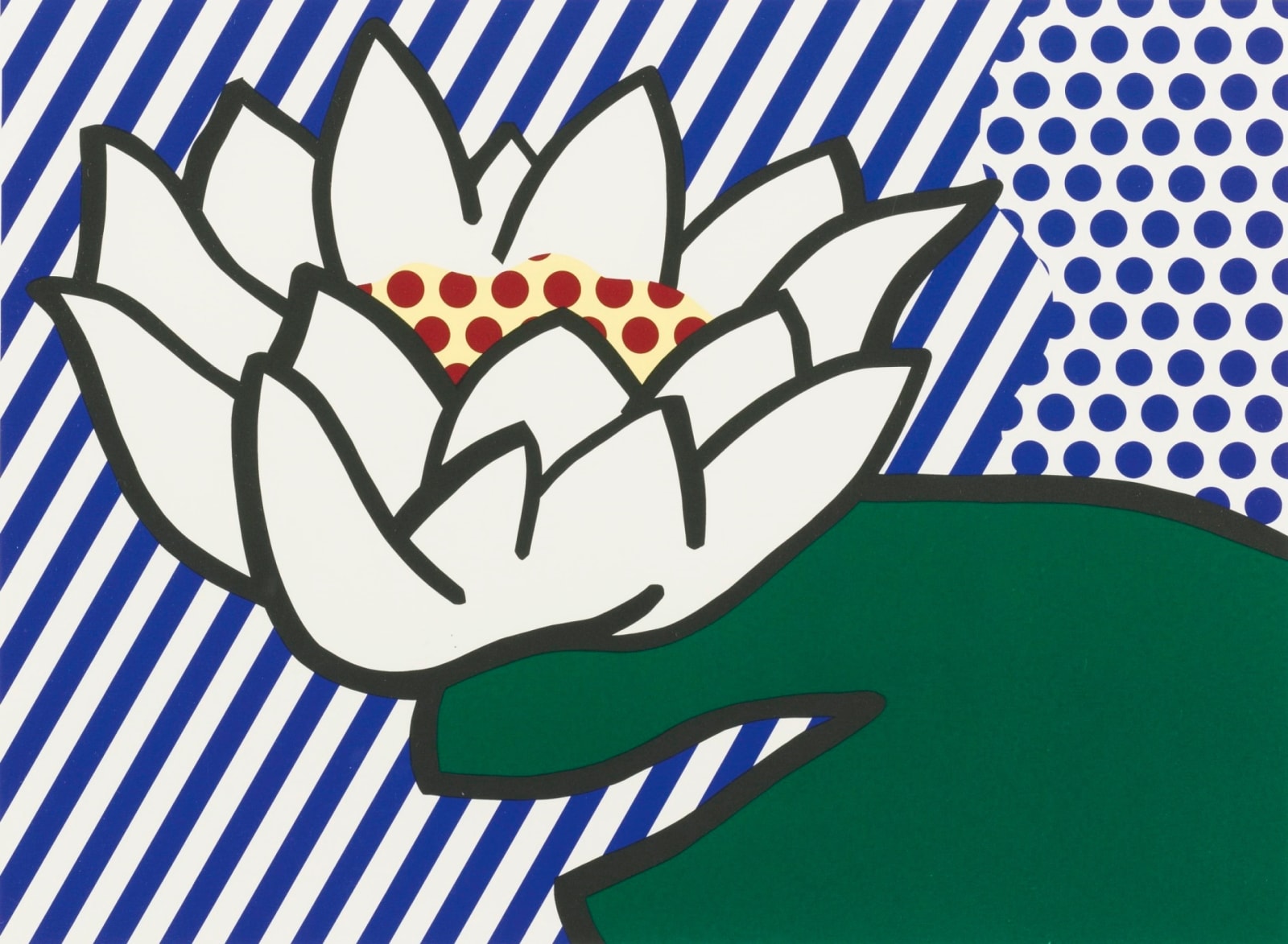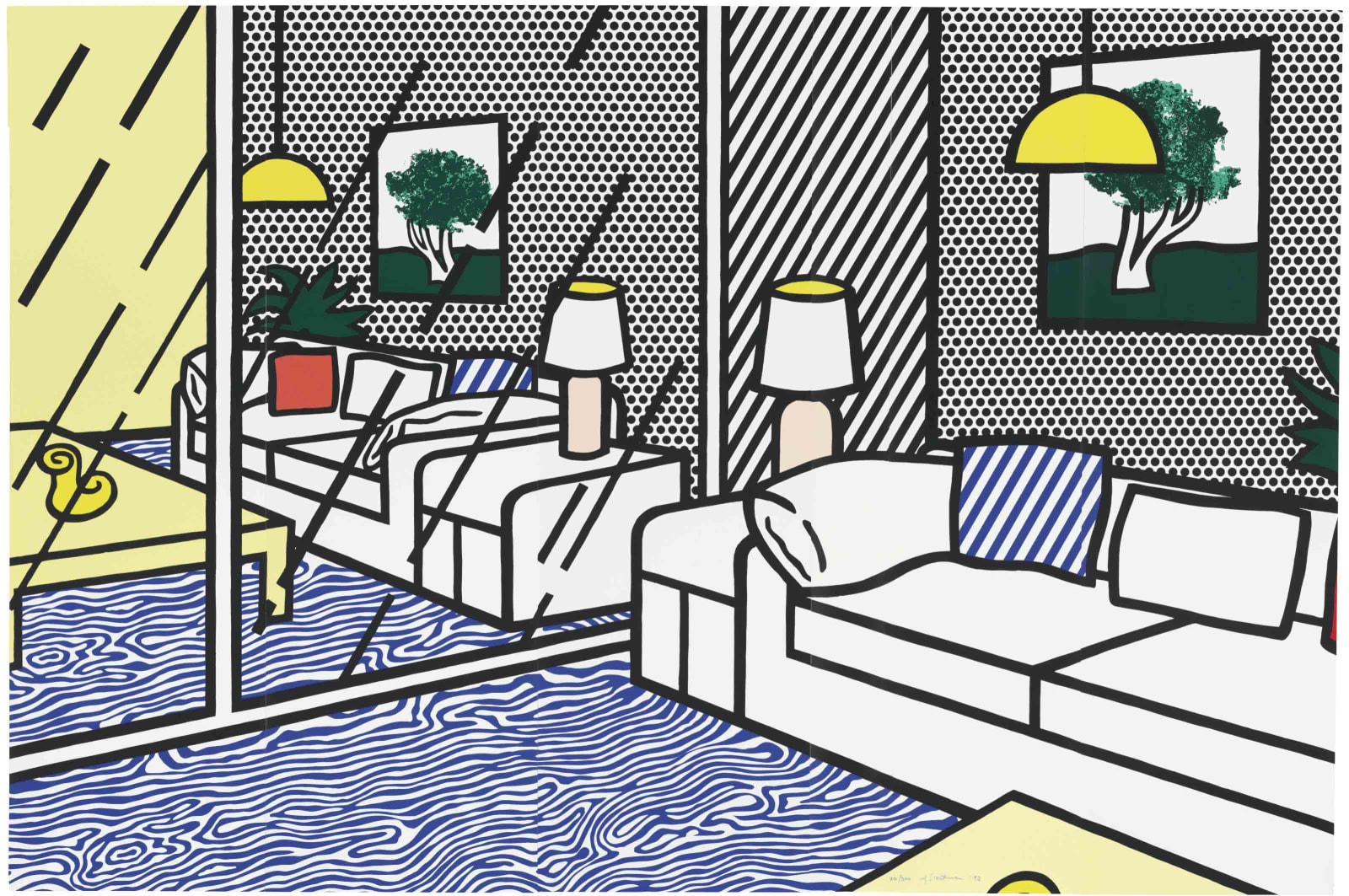
Ben-Day dots were an integral technique used by Lichtenstein across his artistic output. Incorporating the style as early as 1962 in his published print “Girl” (C.33) , Lichtenstein was able to create a mechanical, almost otherworldly feel to his works. Lichtenstein's style of dots has become synonymous with the pop-art era, coating it with a distinctive flair. From their earliest usage, his playful use of colour, tone and shading has sparked a unique phenomenon, inspiring a wave of comic and advertisement-inspired imagery in art.

Developed by illustrator and printer Benjamin Henry Day Jr the process uses small coloured dots (typically cyan, magenta, yellow, and black) that are variously spaced and combined to create shading and colours. The inexpensive printing technique gained popularity in the mid-20th century, particularly in comic books,
Lichtenstein’s use of the technique principally incorporates three distinct elements:
-
Heavy, black outlines
-
A limited colour palette
-
Alternating and contrasting dots and stripes
The impersonal nature of the technique allowed Lichtenstein to create a mechanical feel to his works that created the effect of the removal of the artist;’s hand. Situated within the context of the prosperous boom of mid-20th century America, Lichtenstein’s mechanisation can reflect the wider ease of access to new technologies such as the radio and TV, the automobile, refrigerators and home appliances which all, in their own way, removed the human being from the activity they were undertaking.

For his paintings, Lichtenstein would use a small brush or stencil to apply the dots onto the canvas. Expertly placing dots he would create shading, texture, and tonal variations based on both the size and proximity of the dots. Stylising and playing with the technique, Lichtenstein brought an ethereal, almost surreal quality, to his landscapes, portraits and still lifes. The uniformity and almost perforated appearance of the dots in these works gave way to experimentation, as Lichtenstein later varied their size to achieve shadow effects.

Through his appropriation of mass-produced imagery and the meticulous reproduction of Ben-Day dots by hand, Lichtenstein forced viewers to reevaluate their perceptions of what constituted art. By enlarging and isolating these dots, he drew attention to the mechanical process of image reproduction and the commercial nature of the source material. This approach was both a critique and celebration of consumer culture, as Lichtenstein transformed mundane and disposable images into objects of aesthetic contemplation.
Discover Roy Lichtenstein prints for sale and contact Andipa Editions via sales@andipa.com or cal +44 (0)20 7589 2371 for further information.